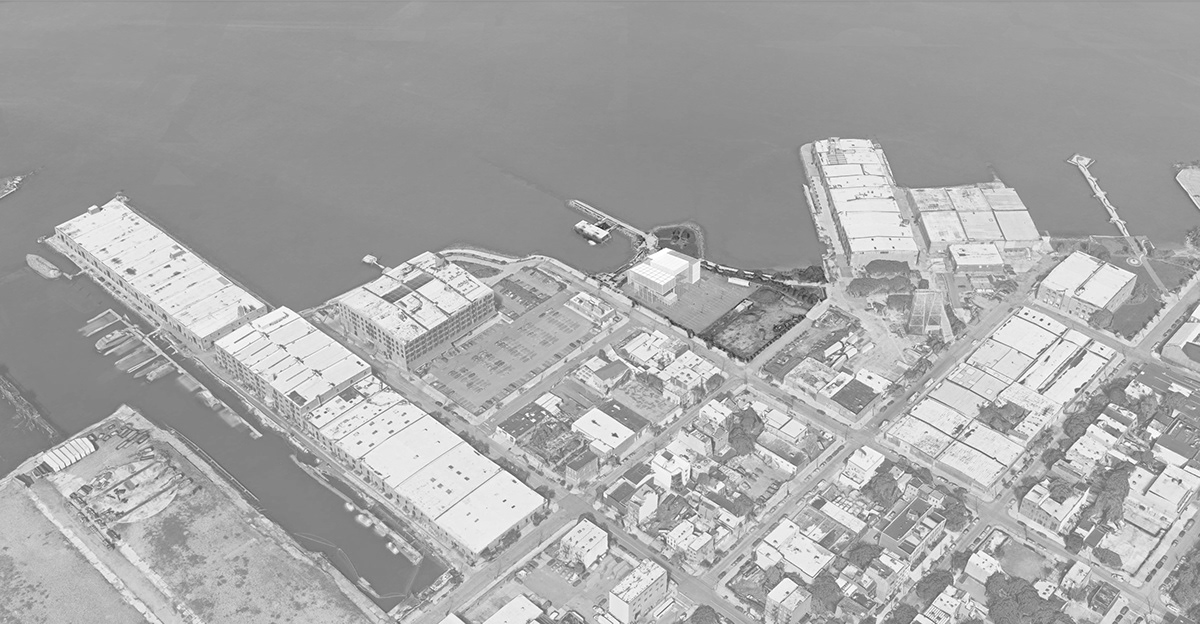
Beginning with an analytical conceptualization of weather, our initial research focused on the idea of environmental, political and social boundaries, the elements that permeate each and the control of them. These ideas translated into the site analysis of Red Hook, Brooklyn NY and my proposal of a weather museum.
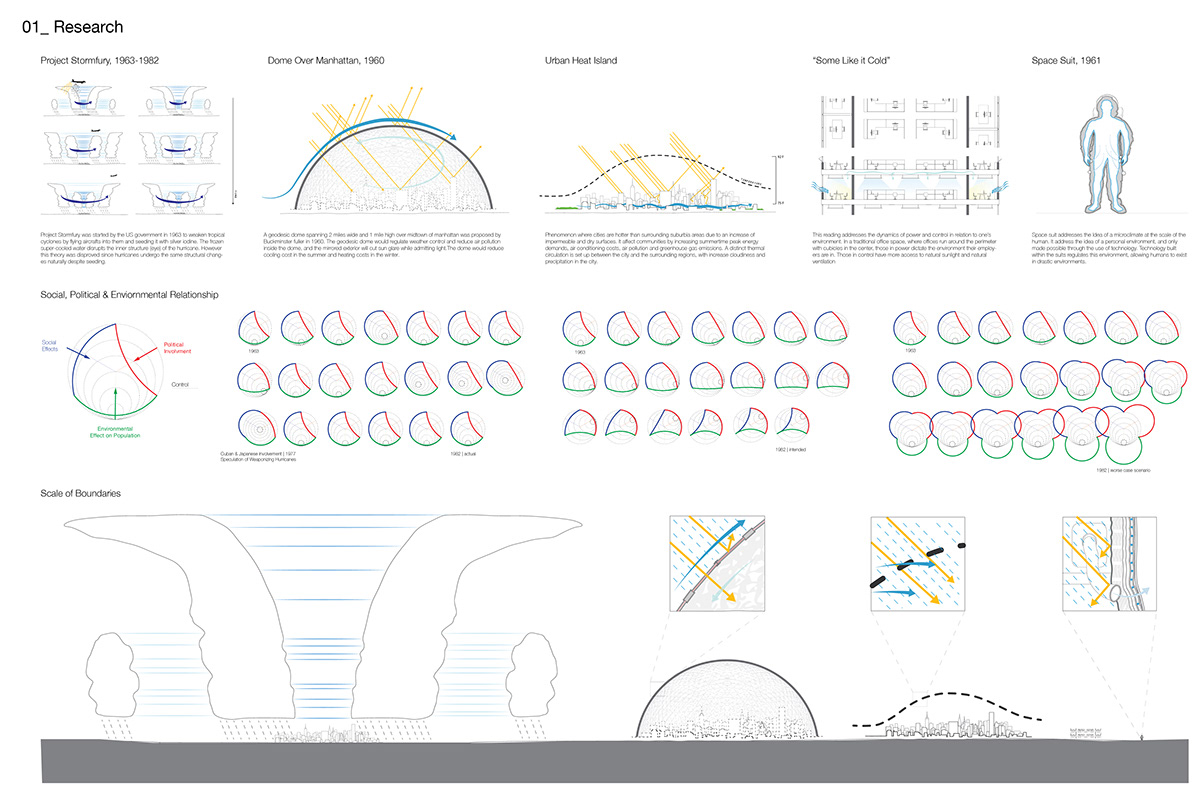
Weather conceptualization catalog: Project Stormfury, Dome Over Manhattan (Buckminster fuller 1960), Urban Heat Island, "Some Like it Cold" (David Serlin), Space Suit.
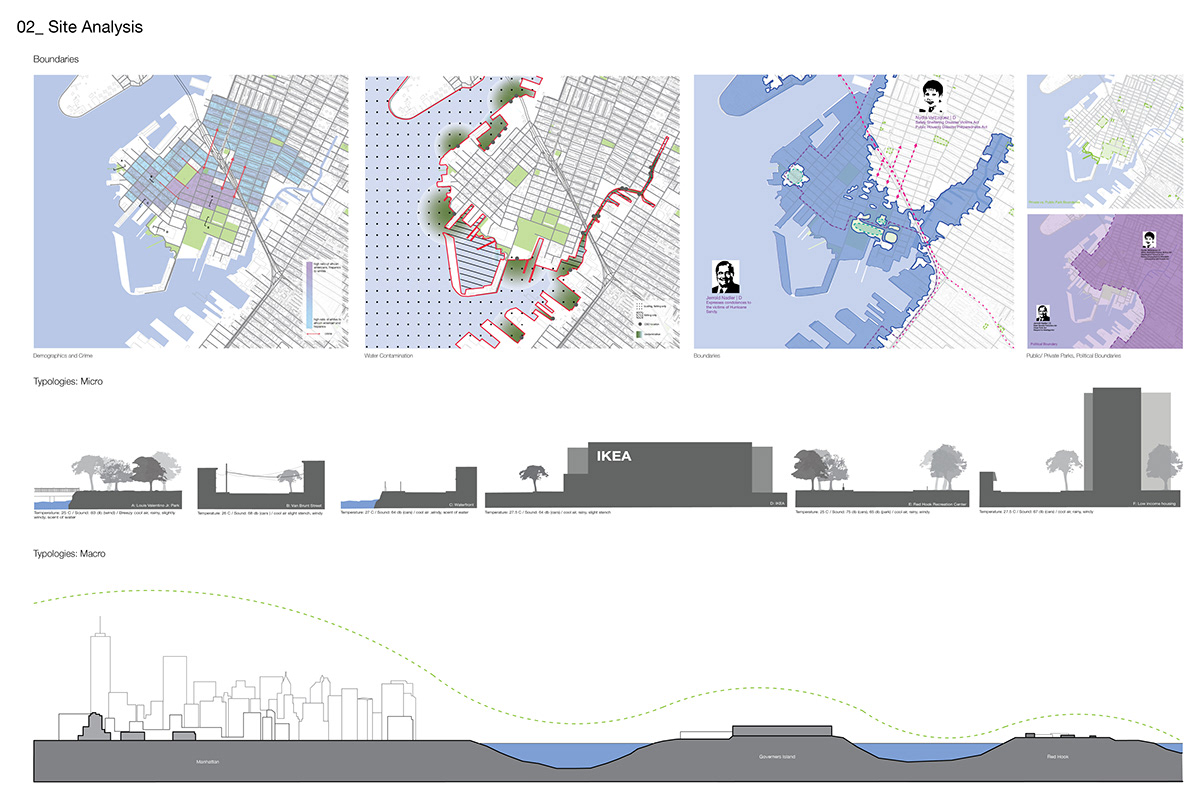
Site analysis. Examining the social, environmental and political boundaries of Red Hook
Contamination: the presence of two or more systems, the contact between them result in some form of phenomenon with a certain degree of unpredictability. The architecture is used as a vessel to hybridize these diverging entities in a single structure. Air is used as a material. By manipulating and allowing different properties of air to interact (ie. difference in temperature and humidity, phenomena are produced passively and actively. Inspired by SANNA’s Toledo Glass museum, I was interested in how the intermediate spaces between two layers can not only be used as insulation but also as habitable spaces for circulation and program and how contamination can occur in or between these layers. Contamination occurs in three forms: physically letting elements permeate (ie. the exchange of air), reactions (condensation on glass), and growth (the growth of mold or moss). This occurs between the inside and outside, and between inside and extremes.
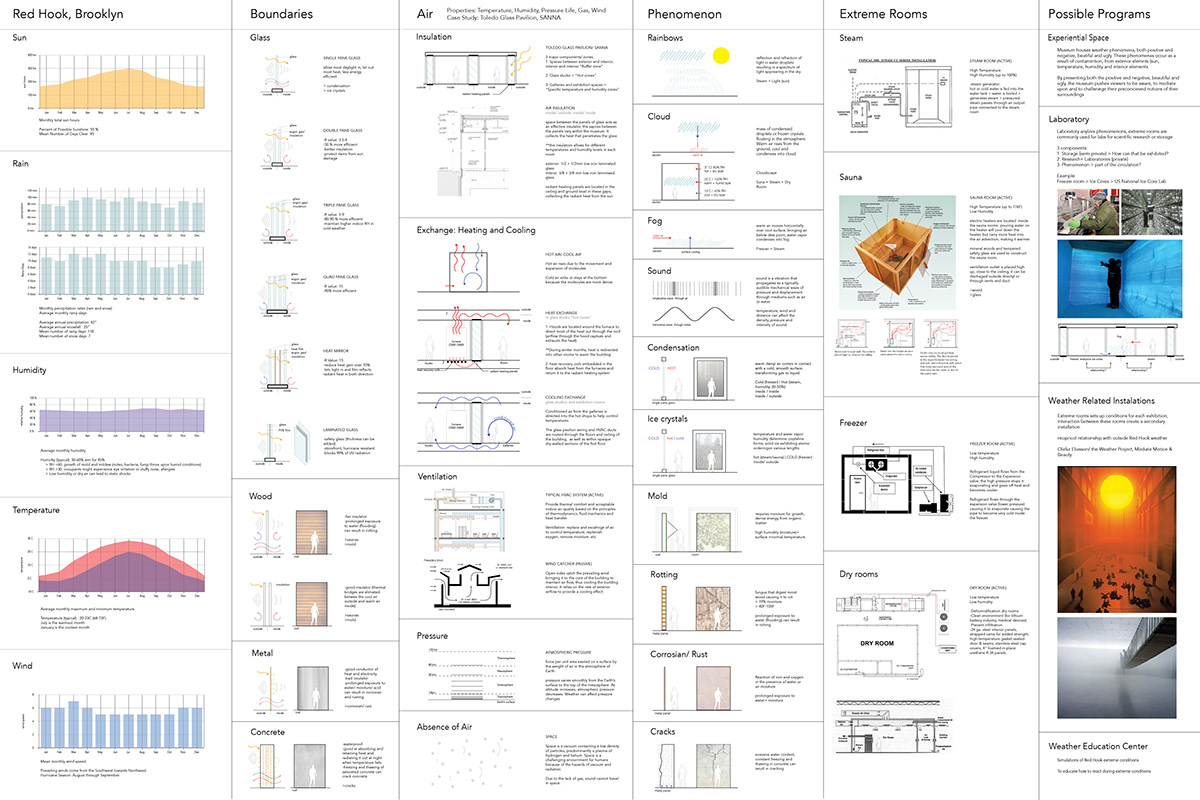
Component and detailing catalog: Boundaries, Materials, Weather and Phenomenon
The attribution of spaces maximizes the viewer’s experience of the phenomena as well as engages the surrounding by using the statue of liberty and Red Hook as a backdrop (A sweating Statue of Liberty). We often think of contamination through porous surfaces. By using the properties of different layers of glass and embracing ideas such as thermal bridging, the architecture demonstrates that contamination can occur through hard surfaces. The building itself, with its performative functions and conditioned spaces is the museum. The museum presents phenomena that are positive and negative, beautiful and ugly, comfortable and uncomfortable. By presenting these conditions and phenomena, the museum pushes viewers to be aware and meditate upon one’s surroundings.
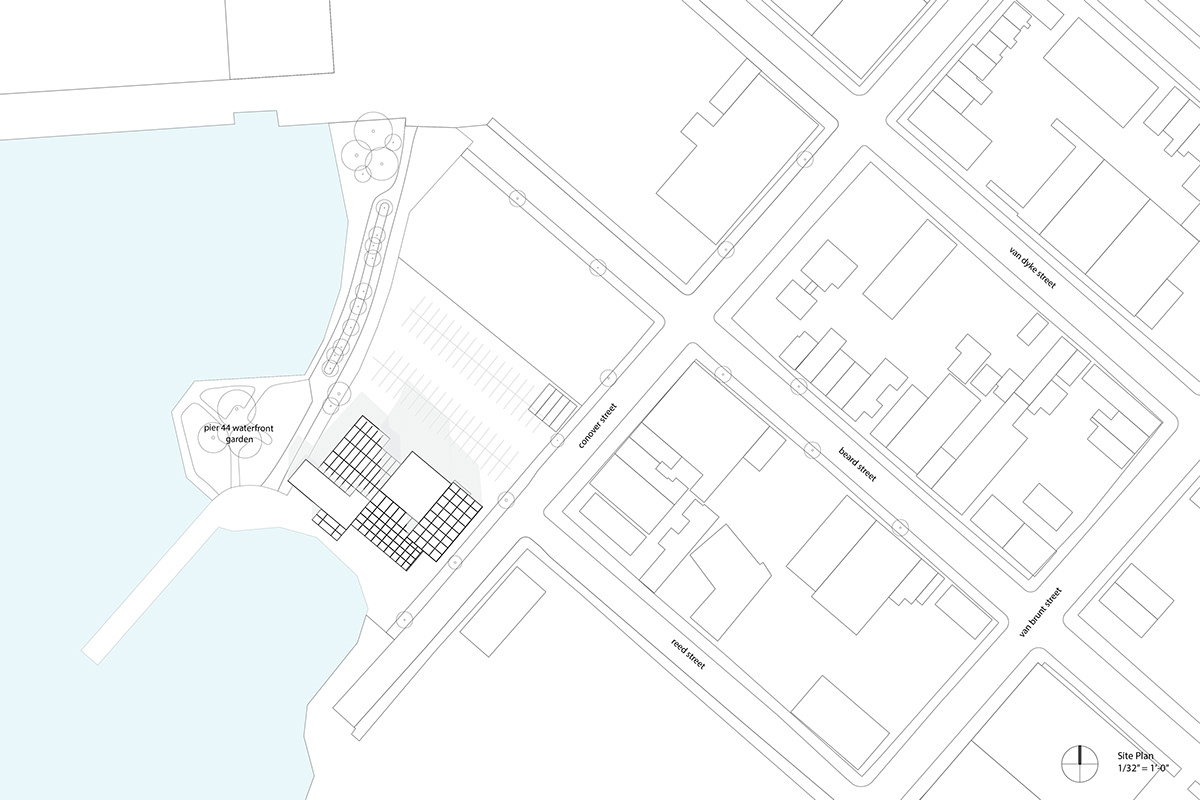
Site Plan | 1/32 scale
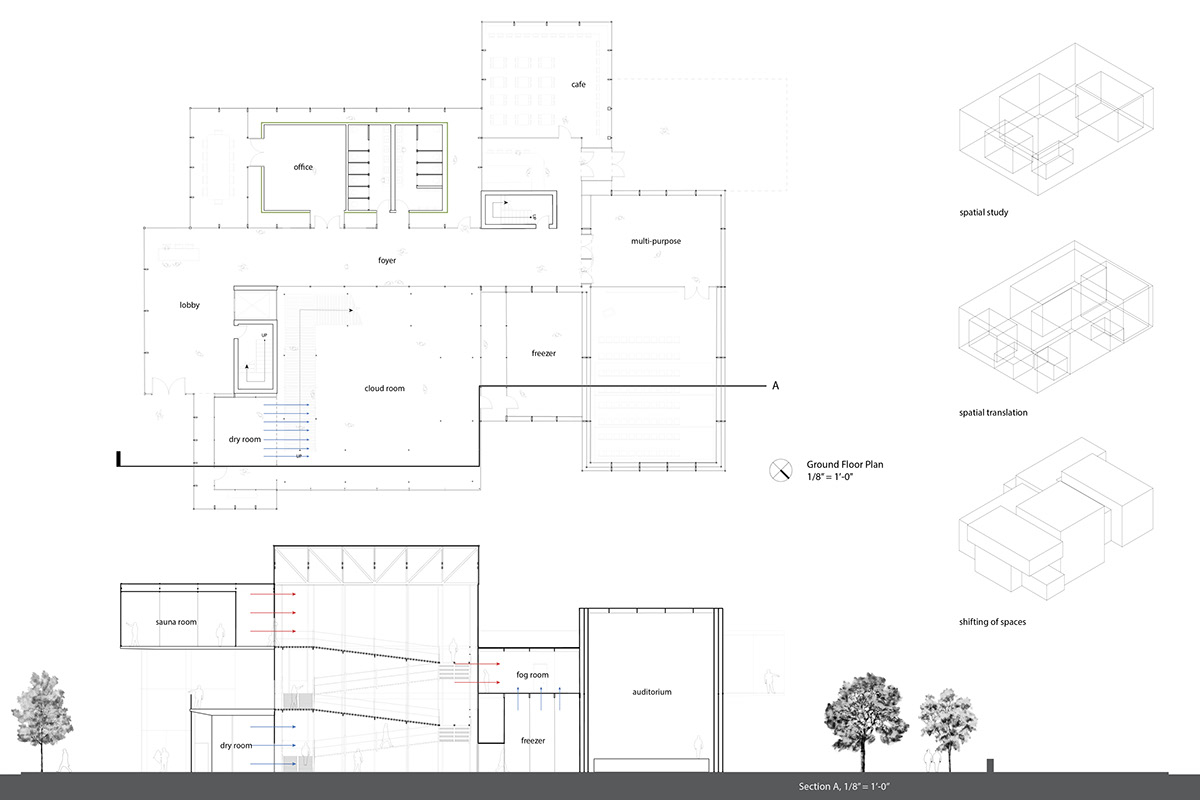
First floor plan & section | 1/8 scale
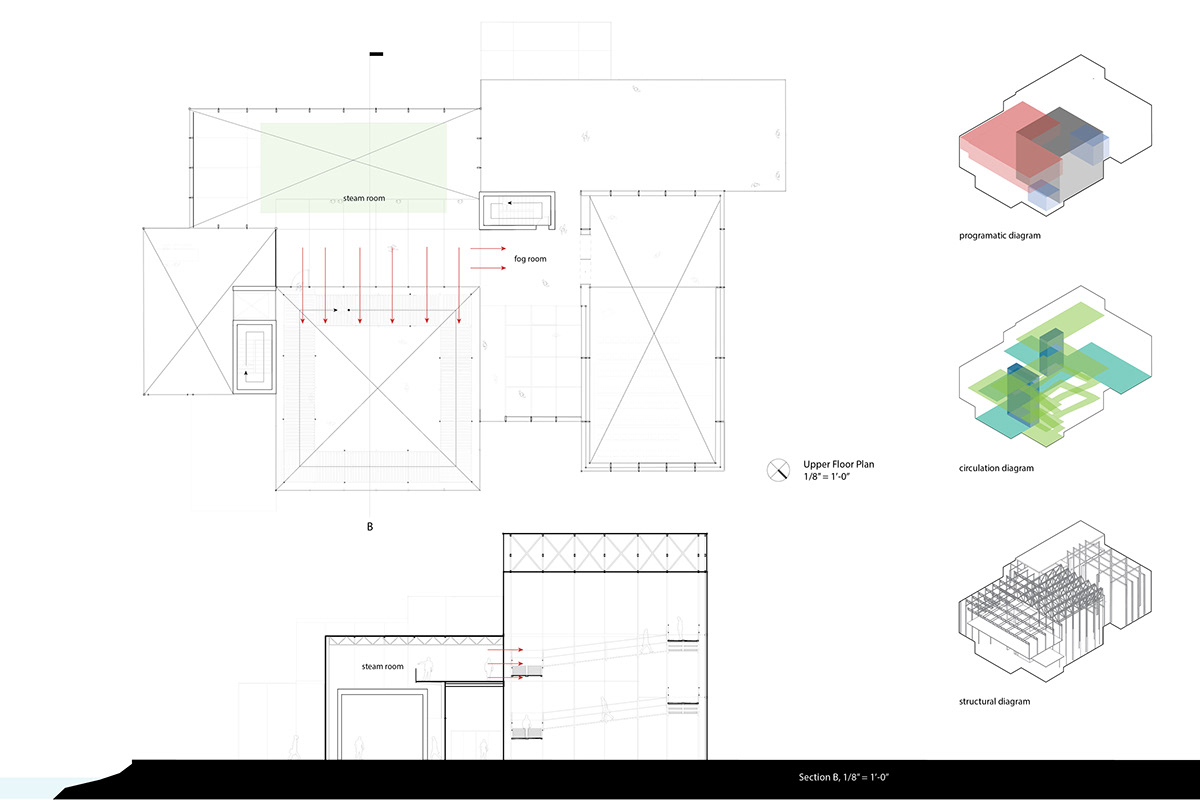
Upper level floor plan & section | 1/8 scale
The building is anchored by the cloud room, a phenomenon produced by three layers of air with different properties. This strata sets up the programatic spaces, with the cold rooms on the ground level and the hot rooms on the upper floors. The weather museum is a sensory experience. While moving through the cloud, one feels the coolness of the "dry room", the humidity of the "steam room" and the dry hot air of the "sauna room."
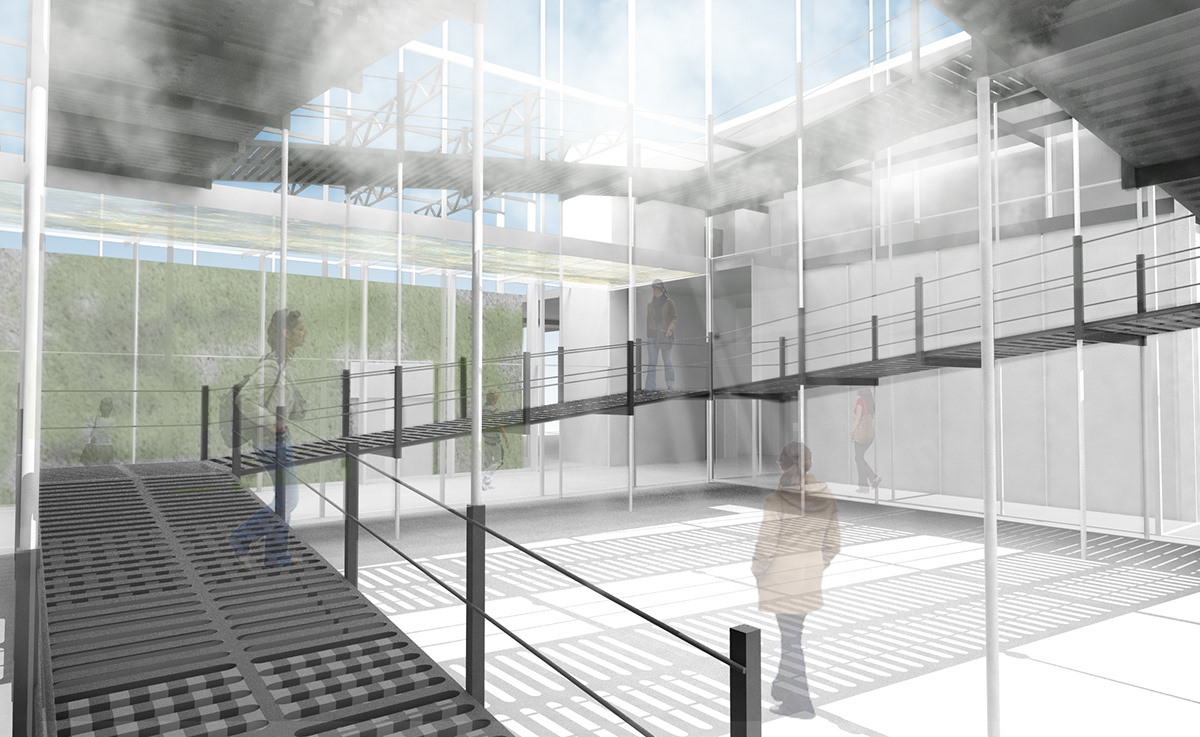
Interior rendering of the cloud room

Interior rendering of the foyer

Northeast and Southeast elevations | 1/8 scale
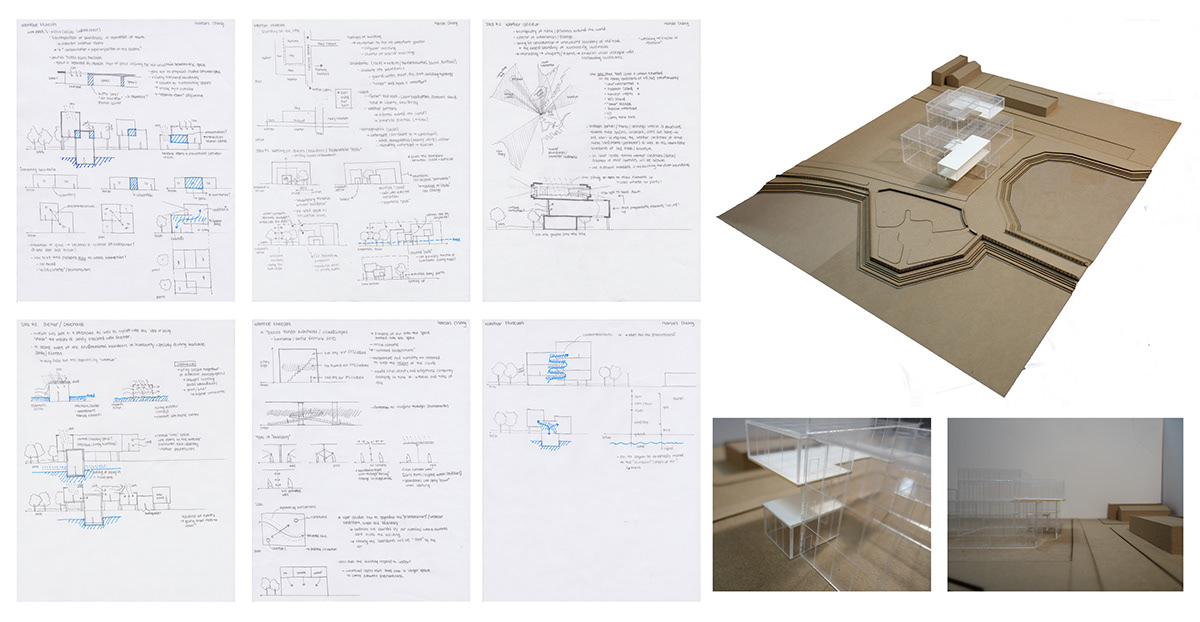
Ideas and Final Model

Process Models


